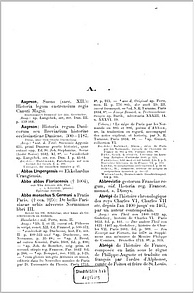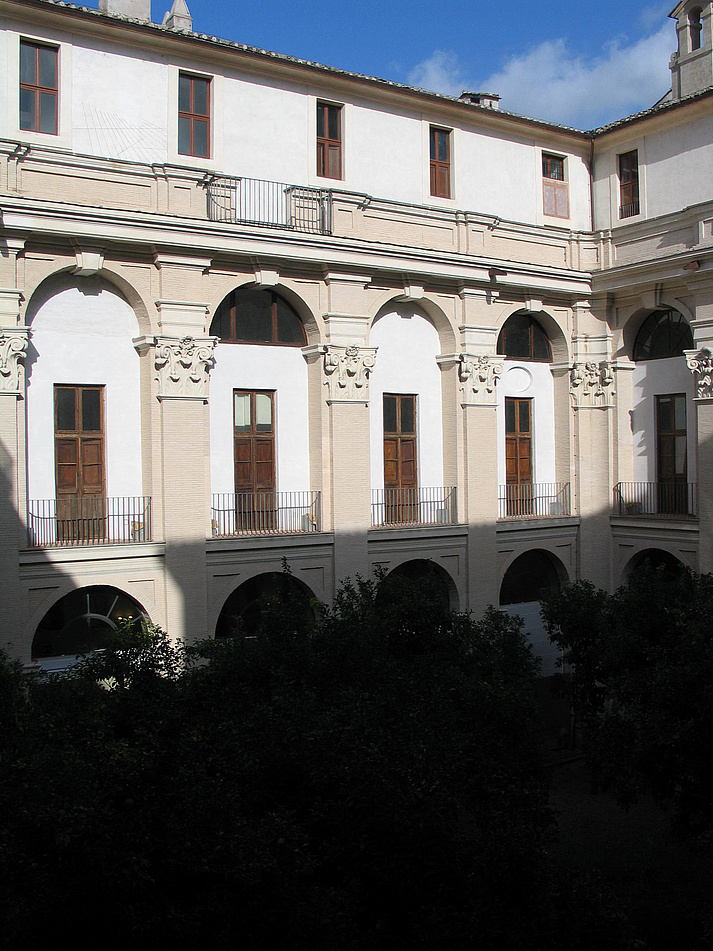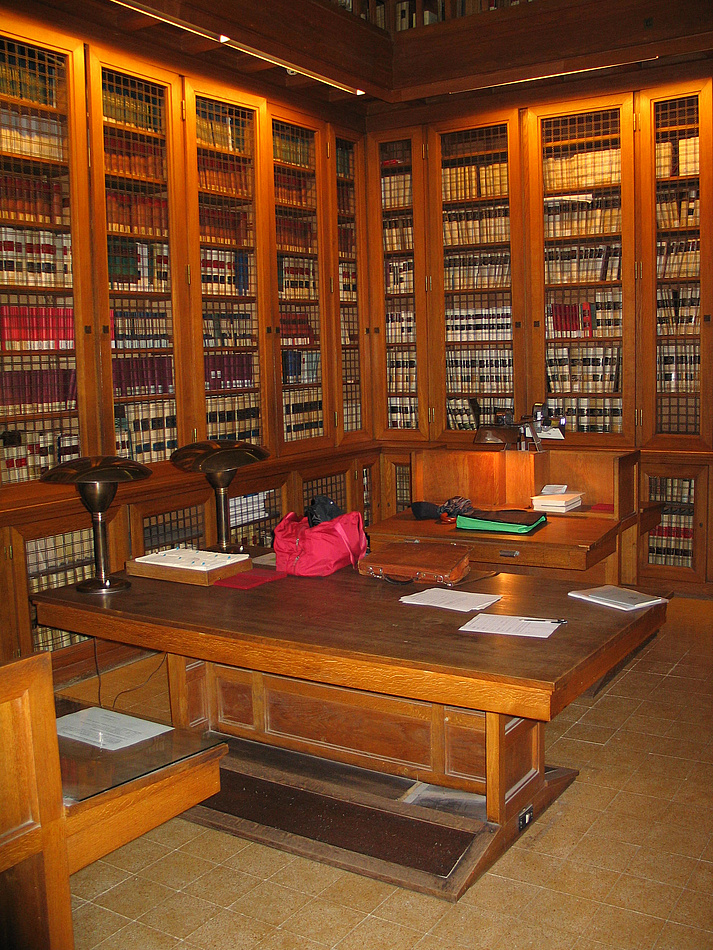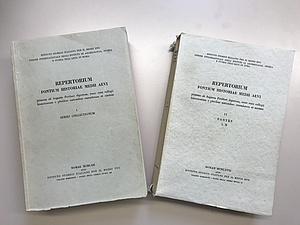Editions of medieval source material have a long history originating in Humanism and the emergence of historical-critical studies. Such edition projects often published numerous volumes and some are even running to this day, such as the “Acta Sanctorum” which were initiated in 1643.
In the 19th century, the publication of historical source editions increased by leaps and bounds, with editorial enterprises such as the Monumenta Germaniae Historica (MGH), which were founded in 1819 and are celebrating their 200th jubilee in 2019, leading the way.
Inevitably, as the number of publications grew, it became increasingly difficult to maintain an overview. It was thus a great relief for all scholars of the Middle Ages when, in 1862, the Berlin librarian August Potthast (1824-1898) brought out his „Bibliotheca historica medii aevi“, a “Guide Through the Historiography of the European Middle Ages from 375 to 1500”, as the subtitle explains.
Potthast’s work was an alphabetical register of all historiographical sources in their existing editions, offering a survey of which texts existed and also indicating where and under which title or titles they had been printed.
To keep abreast of the rapid progress of historical studies, his guide was republished in a second, updated and enlarged edition in 1896, but also this version soon became outdated and required revision.
International from the Start
To meet this need, the project of publishing a new revised edition of the “Potthast” was initiated at an international historical congress in Rome in 1953. Since the task now far exceeded the capacity of a single person, a group of 39 European research institutions agreed to cooperate in this joint project. From Iceland to Italy and from Portugal to the Soviet Union, each European country established a national committee responsible for writing the articles allocated to them. The coordination and editing of the final volumes of the Repertorium Fontium Historiae Medii Aevi was assumed by the Istituto Storico Italiano per il Medio Evo in Rome (www.isime.it). The project was successfully completed with the publication of volume 11 in 2007.
Istituto Storico Italiano per il Medio Evo (ISIME) in Rome (Fotos: Markus Wesche)
The Bavarian Academy of Sciences and Humanities (BAdW) was involved in the project from the very beginning with the „Kommission für das Repertorio delle Fonti Storiche del Medio Evo“, established in 1956. Initially, the commission had the task of writing the articles on Byzantine and Turkish sources, while responsibility for the German sources (FRG and GDR) was assumed by the Deutsches Historisches Institut in Rome (www.dhi-roma.it) until 1963, and thereafter by the MGH (www.mgh.de).
From 1965 on, the BAdW also financially participated in the work on German sources, financing the project through the Repertorio-commission first at 50% until 1974 and thereafter at 100% with initially one and from 1994 to 2017 two full-time research posts. The commission was seated in the rooms of the MGH until 2005, when austerity measures forced it to relocate to provisional quarters in an annex of the Bavarian State Library (Bayerische Staatsbibliothek, BSB), and finally, in 2012, to the main building of the Academy.
Digitisation of German Sources
Even before the final volume of the „Repertorium Fontium“ had appeared in print, it had become clear that further revised editions would be inevitable. Obviously, the most suitable medium to keep abreast of ongoing research was the internet. Since the end of the 1990s, work therefore began on the digitisation and updating of the printed articles. In contrast to the printed Repertorium, this revision work was limited from the very beginning to German historical sources. Consequently, in 2008, the project was renamed as „Repertorium Geschichtsquellen des deutschen Mittelalters“. In a first phase beginning in 2006, simple text documents were made available online. With the funding of the German Research Foundation (Deutsche Forschungsgemeinschaft, DFG) and in cooperation with the Munich DigitiZation Centre (Münchener Digitalisierungszentrum der Bayerischen Staatsbibliothek) of the BSB, we were able to start our online XML-based database with multiple search functions in 2012 under “www.geschichtsquellen.de”.
New Database for further Updates
However, not even this first version of our database was able to cope with the requirements of continuous revision and caused the host, the BSB, irresolvable problems. Finally, in 2018, the BAdW took over the technical support for “geschichtsquellen.de” and developed a new data format allowing us to constantly modify and supplement the entries. In 2019, the existing data were transferred into the new format.
Link to database see Online-Format







